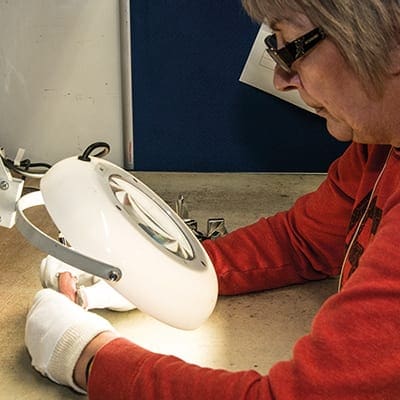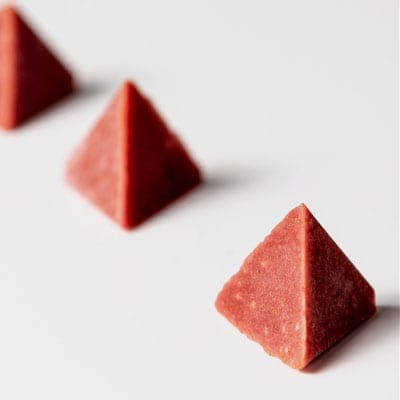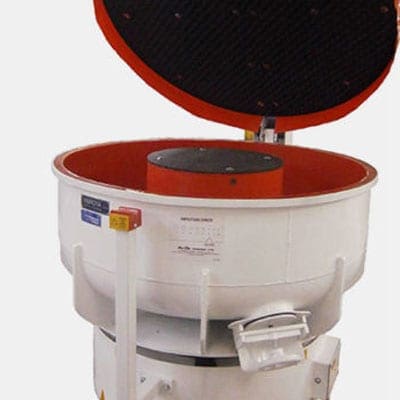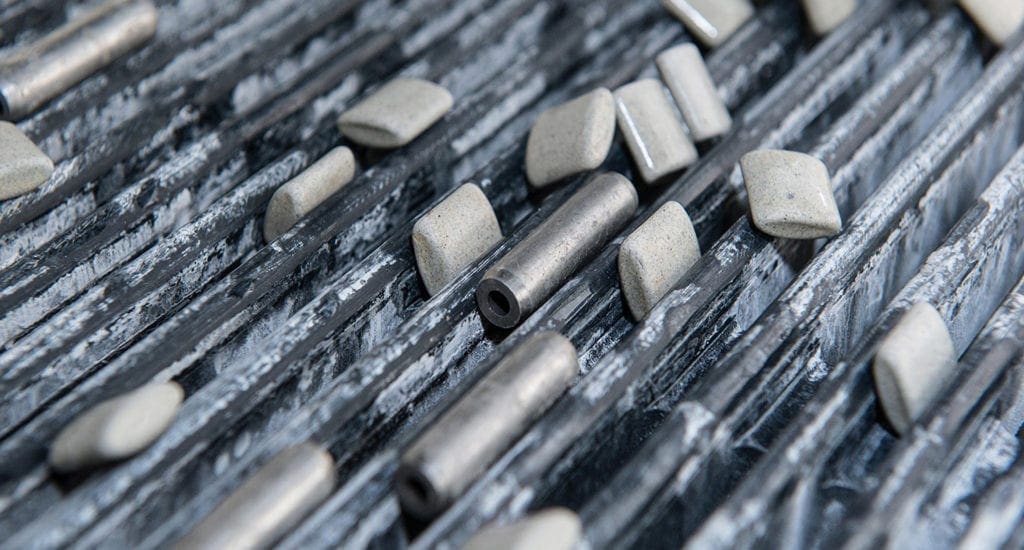
Vibratory finishing is a process that automates the mechanical and chemical finishing of various shaped parts.
To identify the right finishing process for your part, we recommend running finishing trials. This will determine the correct media, compound, vibratory finishing machine and other process parameters which will ensure repeatability in results.
To help you run a successful trial, we’ve put together seven simple steps:
STEP 1: Gather information regarding your part
The recipe to achieve the required surface finish involves using the correct machinery, media and compound. These parameters can be determined once you know the part details.
We suggest taking some time to establish the part details such as: the material dimensions, shape, weight, surface roughness and process requirement.
STEP 2: Determine which vibratory finishing machine to use


Some of the most known and used vibratory finishing machines are the vibratory troughs, bowls, dryers and duals.
Make sure to conduct some research on the different vibratory machines available so that you can decide which machine will work best for you.
For further guidance and information, head to our vibratory machine page.
STEP 3: Calculate the amount of parts you can process/ batch


The amount of parts to be processed per batch (also known as workload) can be determined through media to part ratio.
To do so, you need to calculate the part volume and know the usable volume of the finishing machine work chamber (approx. 90% for vibratory machines).
STEP 4: Set up the finishing machine amplitude
The amplitude of a vibratory finishing machine controls the final finish of the component, so it’s important to get this right.
The amplitude can vary from 1mm to 8mm, with 3mm to 6mm being the normal operating range. The required amplitude can be obtained by adjusting the motor weights.
While for finishing delicate parts you can use a lower amplitude, a higher set amplitude is best for heavier cutting, rolling burrs or peening edges.
For a polished finish or for deburring parts with slots and holes consider a small amplitude and a fast speed.
STEP 5: Identifying the right media for the finishing process
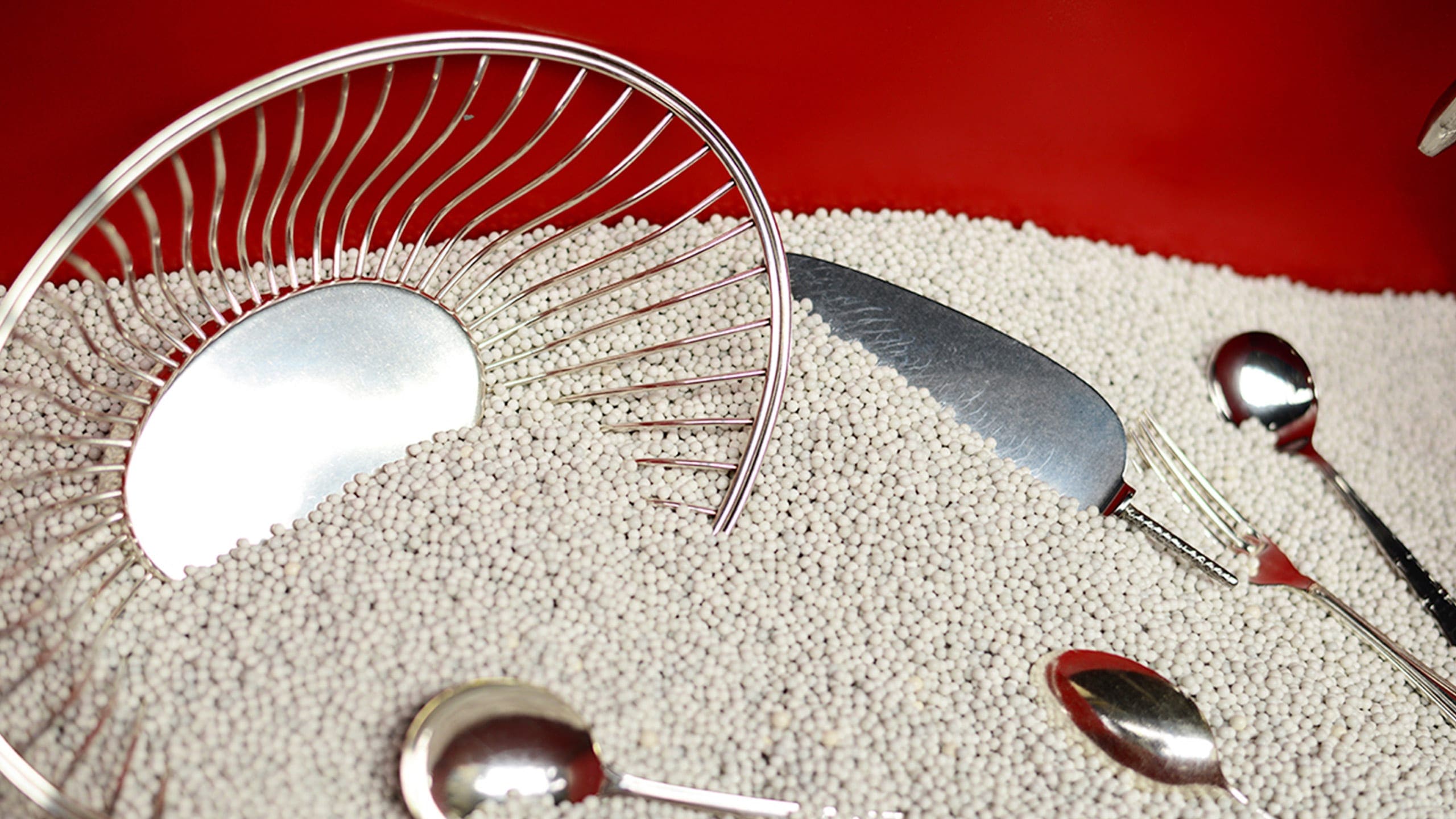

Media transmits the energy generated by the equipment to the parts being processed and are capable of heavy burr removal, edge radiusing to smooth and bright surfaces.
There are a few factors that must be considered when choosing the right media:
Media Type
On the market there is a wide range of media types such as Ceramic, Plastic, Agro, Pre-Treated, Stainless Steel, Wood Pegs, Aluminium Oxide and many more.
Media Shape
When choosing the shape of the media, it is important to consider the geometry of the part – hence any lodgement of media can be avoided and the part finish will be consistent.
Media Size
The component finish is also subject to the size of media chosen. A larger media will generate higher energy; hence it will cut and finish faster. A smaller media can hold more water and compound resulting in less part-on-part damage.
Media Hardness
To avoid damaging the component, it is important to consider the part material and the hardness of the media. Ceramics are harder than plastic; hence it may cause damage to soft materials.
Learn more about ActOn Finishing’s range of finishing media.
STEP 6: Identifying the right compound for the finishing process
Compounds are integral to the success of a process.
These have many functions such as suspending the dirt, oils and media residues and flushing them from the system, as well as keeping the components and media clean, which brings stability to the process.
When choosing the compound, you must consider:
- Process requirement
- Finish requirement
- Component material
Head to our consumables page to learn more.
STEP 7: Run the vibratory finishing trial


The final step is to run the finishing trial. This will enable you to test, improve and ascertain the finishing process parameters and establish a repeatable solution.
As this is a trial you should consider having a number of part samples to use for testing. Make sure these samples are the exact replica of the component to be finished, to ensure the solution is viable.
Once you are happy with the final vibratory finishing process we recommend making a data card. This should contain process parameters, inspection criteria and any other notes to ensure repeatability in results.
We hope these seven steps provide you with the information and guidance you need to set up a successful vibratory finishing process. If you require any more help, don’t hesitate to contact our specialists with any specific questions about vibratory finishing.
FAQs
What is a vibratory finishing machine?
As a common finishing method in the manufacturing industry, vibratory finishing is an efficient process used to optimise all types of small products and parts. Vibratory finishing machines help you clean and deburr products at a faster pace.
What is vibratory deburring?
Vibratory deburring removes the rough edges from parts and enables them to fit together more efficiently. This leads to fewer part rejections as well as improved safety. In addition, deburring is an important step in preparing parts for painting.
How does vibratory polishing work?
In this stage a combination of media, parts and compounds are placed in a vibrating machine. The vibrations cause the contents to move in a circular motion and the media to grind against the part to get the desired finish.
What is a tumbling barrel?
Barrel finishing, also known as barrel tumbling or vibratory finishing, is a surface improving operation in which a mixture of parts, media and compounds are placed in a six- or eight-sided barrel and rotated at a predetermined speed for the purpose of rounding corners, deburring, grinding, descaling, deflashing, improving surface finish and much more.
What are the different types of finishing?
There are several types of metal finishing such as metal plating, chemical finishing or coating, grinding, buffing, electroplating, and sandblasting. Each process has basic steps with all processes beginning with surface preparation. Metal finishing processes can include anything from technical processes to buffers.







